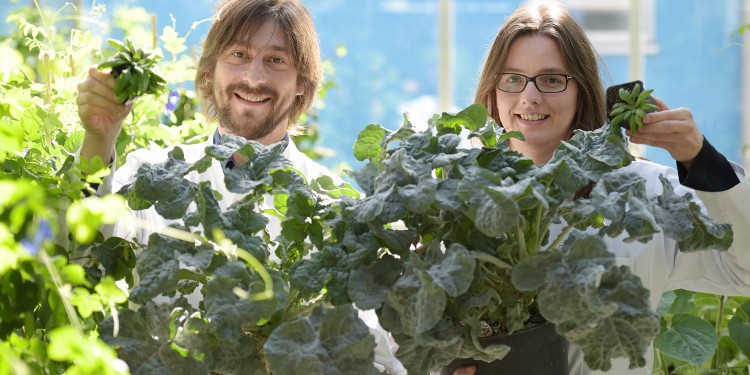
New study on the regulation of seed dormancy in plants
For plants, seed dormancy has a particular importance. It ensures that a seed does not germinate outside season – for example during warm weather in winter – but only when the environmental conditions enable the seedlings to survive. An international team of researchers, led by Dr. Wim Soppe at the Max Planck Institute for Plant Breeding Research (MPIPZ) in Cologne, Dr. Guillaume Née and Prof. Iris Finkemeier at the University of Münster (WWU) has now shown, for the first time, the role that is played by a protein called DOG1, interacting with regulatory enzymes, in controlling seed dormancy. DOG1 stands for "delay of germination". The study has been published in the current online issue of the "Nature Communications" journal.
"Seed dormancy is controlled by the plants’ internal machinery, as well as by environmental influences," explains Guillaume Née (WWU, MPIPZ), lead author of the study. "Humans have influenced this control in many crop plants as a result of breeding measures." In order to ensure a faster and more even germination of seeds, cultivated plants were selected which had a low seed dormancy. "The seed dormancy must not be too low, though, or there can be unwanted side-effects," says Née. "What can happen, for example, is that barley seeds germinate at the mother plant. That makes them unusable." So knowing how seed dormancy is regulated is also of interest for crop breeding in farming, he adds. "The better we know the molecular processes, the more we can influence them in a targeted way."
The regulation of seed dormancy has long been a subject of research and some aspects of it are already known – for example, the researchers know that DOG1 and the plant hormone abscisic acid are involved. The more DOG1 protein is produced in the plant, the longer seed dormancy lasts. If the protein is not present, there is no seed dormancy at all, and germination occurs immediately. Whereas the function of abscisic acid is known quite precisely, the molecular function of DOG1 was not clear up to now.
Now, for the first time, taking the example of thale cress (Arabidopsis thaliana), the researchers have been able to explain the interplay between DOG1 and two different protein phosphatases, special regulatory enzymes of the abscisic acid signalling pathway. With the aid of genetic analyses, and after carrying out comprehensive protein-protein interaction studies, the team of researchers have been able to provide evidence that DOG1 inhibits the function of both phosphatases. In other words, both phosphatases play an important role in controlling seed dormancy. "This work provides an answer to the long-unanswered question: How are the DOG1 signalling pathway and the abscisic acid-mediated signalling pathway – which both lead to seed dormancy – connected to each other?" says Guillaume Née.
The work was funded by the Max Planck Society.
Original publication:
Née G. et al. (2017): Delay of germination requires PP2C phosphatases of the ABA signalling pathway to control seed dormancy. Nature Communications 8, Article number: 72; doi:10.1038/s41467-017-00113-6
